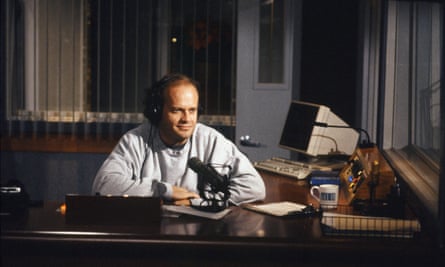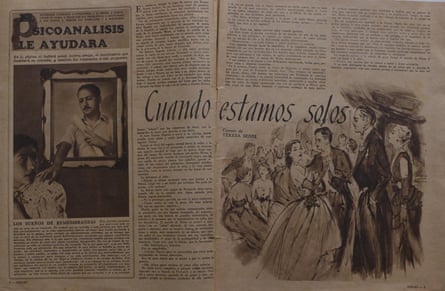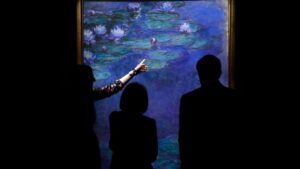Famous Freudian Dr. Frasier Crane may have brought psychoanalysis to the masses over the airwaves in the seminal 1990s comedy in which he constantly spars with his Jungian brother, Niles. But half a century before him, a real-life Brazilian Frasier did much the same.
Sigmund Freud’s influence in Latin America, a region the founder of psychoanalysis never visited, was so profound that it spawned a 1940s hit radio program in Brazil, The World of Dreams, hosted by Freud devotees and psychiatrist Gastão Pereira da Silva.
Broadcasting on Rádio Nacional, Brazil’s equivalent of the BBC, and with audience figures that would kill Frasier’s show on Seattle-based KACL, Pereira da Silva took listeners’ dreams, had actors voice them, and then psychoanalyzed them on air.

It is one of many examples of Latin America’s early and enduring acceptance of psychoanalysis, and Freudianism in particular, highlighted in an exhibition held at the Freud Museum in London in his former and last home in Hampstead.
Through letters, photography, surrealist art, books from Freud’s own library, comics, magazines and newspapers, the exhibition shows Freud’s influence on Central and South America, which became a leading region worldwide for psychoanalysis, with Buenos Aires is said to be home to the highest number of psychoanalysts per capita in the world.
Although Freudian psychoanalysis is often considered a European practice—begun at his home in Vienna—its impact in Latin America was probably most dramatic, taking root in Argentina, Brazil, Chile, Mexico, and Peru.
Jamie Ruers, the curator of Freud and Latin America, said: “Pereira da Silva was very close to Freudianism. He was a self-proclaimed psychoanalyst, and in many ways so was Frasier Crane. Both of them were breaking down stigmas about therapy by bringing it to the masses. There weren’t many people doing this kind of thing on the radio that made it popular the way it was.

“And that is really the message of the exhibition; the idea that psychoanalysis, especially Freudian psychoanalysis, was delivered to such a wide audience in Latin America from as early as the 1930s and 40s.” An audio recording of one of the performances is part of the exhibition.
Psychoanalysis, especially dream analysis, became intertwined in Latin American cultures. The 1930s Buenos Aires newspaper Jornado invited readers to submit their dreams for analysis by “Freudiano”; An Argentinian women’s magazine, Idilio – comparable to today’s Cosmopolitan – analyzed readers’ dreams illustrated with surrealist artwork by photographer Grete Stern.
“Women sent in their dreams and they would be analyzed, along with these beautiful, beautiful, photomontage, surreal artworks,” Ruers said. Examples of this artwork, along with works by Brazilian poet and woodcarver Jose Borges, and Mexican multimedia artist Santiago Borja, form part of the exhibition.
Other key figures in the program include the black Brazilian doctor Juliano Moreira, a son of addicts, who encountered Freud’s name at a 1913 medical congress in London and who brought psychoanalysis into the medical domain in Brazil, where centers still use his bear name

Freud’s boyhood fascination with the Spanish language – he never mastered Portuguese – was inspired by his wish to read Don Quixote by Miguel de Cervantes in its original language. Self-taught as a teenager, Freud exchanged letters in Spanish with his friend Eduard Silberstein, each adopting a Spanish pen name inspired by Cervantes’ novella, The Dialogue of the Dogs. Freud became Cipión and Silberstein was Berganza.
In the 1920s, Freud formed a close relationship with the Peruvian psychiatrist Honorio Delgado, whom he described as his “first foreign friend”. They exchanged letters, books and gifts over the following decades.
When Freud moved to London as a refugee in 1938, he brought 34 of his 62 Latin American books, many of which were inscribed with dedications by their authors.
Ruers said: “This exhibition will tell fascinating stories about Sigmund Freud that most people will not know.”
-
Freud and Latin America at the Freud Museum, London NW3 5SX, from 17 January to 14 July 2024. Tickets at www.freud.org.uk





